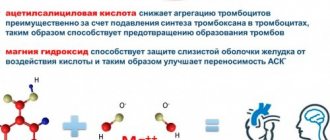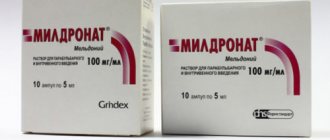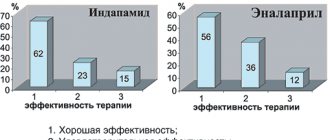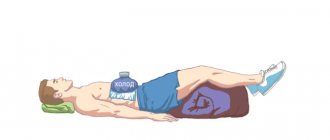Secrets from the pros.
Hello! “Three Cripples” is in touch and the third running season, which we are doing together with adidas: we tell beginners how to motivate themselves for their first run, how to run correctly, how not to get injured and much more. Experts and coaches from the AR Moscow running community help us.
Not all the texture fit into the audio, so we publish the best highlights of the episodes with Vasily Permitin and Sardana Trofimova in text.
Dynamic loads
The most beneficial thing for the body is dynamic load - that is, movement. This type of physical activity includes running, swimming, walking, as well as such popular exercises as lunges, squats, and crunches.
What do regular dynamic loads give?
- A well-developed exercise program helps build the body;
- Exercise promotes muscle growth;
- Energy consumption increases - not only during load, but also at rest;
- Lung volume and depth of breathing increases;
- All tissues of the body are more intensively supplied with oxygen;
- Metabolism improves;
- The risk of developing diseases of the musculoskeletal system is reduced.
What to do if your sneakers rub
Sardana Trofimova: Your feet may chafe because the sneakers are new and not yet worn in. You also need to be careful during long workouts: when you run for a long time, you sweat, and salt comes out. It can lead to chafing.
That's why before every long workout and before a marathon, I smear Vaseline on all my fingers, between my fingers and in places where it might rub. Sometimes even my top rubs. Therefore, I smear any places where chafing may occur with Vaseline - it’s enough for me for the entire distance, I can easily run a marathon.
I would also like to advise amateurs not to wear new sneakers and new socks to the competitions. You definitely need to wear them for at least a week, and run in them at least a couple of times, so that the sneakers become softer. And you also need to run in new socks at least three times and wash them.
Static loads
Load is not necessarily movement. Staying in one position for a long time can also be a strain on the muscles. If your health does not allow you to practice dynamic loads, you can resort to static ones. They do not require active movement; on the contrary, during the process you must maintain a certain position or change it very slowly (as, for example, in yoga or Pilates). Such loads are indicated even for diseases of the cardiovascular system or musculoskeletal system, which do not allow dynamic activity.
Is it possible for heart damage due to exercise?
Any physical activity, and especially stress on the heart, should be done wisely. If after training you experience pain in the chest area or a change in rhythm, you should consult your doctor. A specialist will help you figure out the right way to strengthen your heart muscle. Any activity is stressful for an unprepared body, and if you do not know your level of permissible effective load on the heart, you can get serious consequences:
- pain in the heart area;
- arrhythmia;
- cardiac hypertrophy;
- bradycardia;
- hypotension;
- exacerbation of existing diseases;
- myocardial infarction.
How to calculate heart rate for sports
The abbreviation HR stands for “heart rate,” in other words, it is the pulse. The easiest way to measure it is to place your finger on your wrist about 3-5 cm below the bend of the hand and count your heart rate for 15 seconds. Multiply the result by 4 to get the number of heartbeats per minute.
The same work can easily be done by modern fitness bracelets and smart watches. If you just started playing sports, these devices will help you track your daily activity and heart rate.
Measuring your pulse during exercise is very important: this allows you to understand how your heart reacts to physical activity and prevent overload.
In an adult, the resting pulse should vary from 60 to 80 beats. When under load, the norm is considered to be up to 200 beats - and the figure of 100-130 beats per minute belongs to the zone of moderate loads, during which fat is intensively burned. 130-170 beats per minute are already intense loads that are suitable for training the heart. Above are high-intensity workouts, which are stressful for the body. You can only exercise with such a pulse under the guidance of an experienced trainer.
Please note that your heart rate may be higher if you exercise in a stuffy room, get sick, or drink coffee shortly before your workout. In this case, monitor your well-being - the higher the pulse, the harder the load is tolerated.
How does exercise affect the heart?
With any type of training intensity, the muscles begin to work, during which their need for oxygen increases, the heart muscle begins to contract more often in order to fill this need. When the heart works intensively, blood pressure (BP) increases, and the body has to launch the hypotensive system, which is responsible for reducing it.
To obtain energy to carry oxygen, the body first burns carbohydrates. After a 15-20 minute workout, it begins to burn fat. The hormonal system of the adrenal glands and thyroid gland also begins to work, and the composition of the blood improves. Due to the work of the muscles that compress the vessels, pushing out blood, then relax filling the vessels with blood, the load on the heart is reduced. Therefore, even a little physical activity is beneficial for people even with severe heart disease.
Blood pressure and sports
Normally, a person’s blood pressure should be approximately 120/80. But people who lead a healthy lifestyle may have lower blood pressure - for example, within the normal range, blood pressure is 100/60.
Sports are not contraindicated for people with hypertension - but they need to carefully monitor the level of stress and start exercising in a gentle manner. You can start with walking - first accustom yourself to walking more, then increase the pace. Later you can switch to running or swimming.
It is better to start training after consulting with your doctor.
IMPORTANT! If your blood pressure exceeds 190\110 at least periodically, if during physical activity you experience a burning sensation or pressure in the chest, intensive training, unfortunately, is contraindicated for you. But you can do static exercises, such as yoga.
What is long-distance running and how to prepare for it
Vasily Permitin: According to official terminology in athletics, long distances are 5,000 and 10,000 meters and a half marathon. But usually this includes the marathon. Interesting fact: when we talk about running at a stadium, we talk about the distance in meters – running 5,000 and 10,000 meters. If we talk about the highway – 5 km, 10 km. Some people don't know this and get confused.
The main feature of long distances is that they are run in an aerobic mode. Therefore, during preparation, a large volume of slow running is necessary to build an aerobic base. This is the basis without which it is impossible to overcome the distance normally. Well, that is, you can run, but to run fast or improve your personal best, you need to run at a calm, slow pace. The volume should increase smoothly.
Then we add intensive developmental training, which should be built in in doses and combined with slow volume running. And you can also add strength training to prevent injury in the first place. Nowadays, cyclic sports, especially running, are very popular, and people who get off the couch immediately begin to fanatically run a lot, run fast, and this leads to injuries due to an incorrect balance in training and the lack of a sports base.
Charging at the workplace
Everyone knows that a sedentary lifestyle has a negative impact on health. It is not without reason that most office workers, who sit for up to 10 hours a day, have musculoskeletal diseases.
To prevent the development of illnesses, experts recommend doing a short warm-up at the workplace every two hours. It looks like this:
- First, pay attention to your neck. Slowly rotate your head back and forth, up and down. Repeat this at least 10 times.
- Then stretch your arms. Lift them up, clasp your palms together and stretch as high as possible. Next, make circular movements with your shoulders, 10 times.
- Pay attention to your wrists. Make 15 circular movements with your brushes.
- Stand on the floor and try to reach your palms to your feet without bending your knees. If it doesn't work, stretch as far as you can. Hold the position for 15 seconds.
- Sit on the edge of a chair with your legs extended in front of you without bending your knees. Keeping your back straight, pull your feet towards you and then back.
This complex must be carried out every 2-3 hours at work.
How to dress for different weather
Sardana Trofimova: We have a cold winter in Yakutsk, so at home I train down to -30°C. When it’s very cold, I leave for training camp. I dress so that when I go outside I don’t feel hot. It should be a little chilly. If you dress warmly, you will sweat a lot, and at the end of the distance you may get winded.
We also run at -50°C, but there we need completely different equipment. This is extreme for most amateurs, but it also has its advantages, because in addition to training functionally, you also train your muscles: you have a lot of clothes, they interfere with movement. When you run in the snow, you feel slippery, and you also improve your physics.
Calorie counting
If you want to not only become healthier, but also lose weight, it is important to pay attention to nutrition. Diet determines 70% of weight loss success. The most effective way to lose weight is to count calories. In order to accurately calculate them, you need to purchase a kitchen scale. It is convenient to use various applications for counting - they automatically calculate calorie content depending on the weight of the product. To maintain healthy and comfortable digestion, an adult should consume about 1700 kcal for women and about 2200 kcal for men. To lose weight, it is enough to reduce this number by 20%.
How to avoid heart problems?
Modern man is accustomed to solving problems as they arise. But it is important to remember that preventing diseases is easier than treating them. A cardiologist is responsible for the normal functioning of the heart muscle and helps to identify malfunctions in its functioning in a timely manner. Preventive consultations are necessary even for healthy people. The doctor can tell you what tests need to be done in your case:
- blood test from the group of cardiac risk indicators (AST, ALT, C-reactive protein, cholesterol, triglycerides)
- ECG
- EchoCG
- blood pressure monitoring
- Holter ECG monitoring (daily or during training)
The most important thing for maintaining heart health is timely medical care or timely preventive measures. In this case, private medicine has the opportunity to provide clients with a flexible schedule at a time convenient for them, without queues and stress. The presence of modern equipment and highly qualified doctors, which is also important for maintaining health and for the correct treatment of already known diseases.
Heart Rate Training Pyramid
The pyramid of the pulse zone of training implies training in all zones, but taking into account the individual characteristics of the body: the most effective workouts are those that take place 80% in pulse zones 1-2 (the easiest - recovery and fat burning) and 20% in the rest ( cardio, endurance, maximum). But you need to take into account the general fitness of the person:
- if the goal is weight loss, and the initial weight is very large, then the entire workout should take place only in 1 pulse zone (recovery, warm-up);
- you can move on to the next zone only after the body gets used to the previous one, and the whole workout will be too easy, even without increased breathing;
- Even with maximum endurance and many years of sports, going through all the pulse zones is mandatory during one workout - it is strictly forbidden to proceed to the anaerobic pulse zone without preliminary “warming up”.
The time to “pass” each zone should also be determined individually. The first or second can last 2-10 minutes, the third – 40-50 minutes, if the goal is weight loss and figure correction.
Peculiarities
Tension varies; it depends on the force with which the body is forced to move in the process. By increasing speed, the body increases its need to absorb the substances it needs and changes ongoing physiological processes.
The heart is capable of pumping blood at different speeds. When the stress on the artery walls increases during exercise, the heart rate increases.
If you run, your normal heart rate will be higher than if you sit on the couch, which is logical. This is in a completely healthy and trained person. For people who are overweight, have a fever or other problems, it is even higher. But for such categories, an adjusted plan for working on oneself must be created separately.
Measurement
Pulse measurement is usually performed at the wrist. It is enough for a person to count the number of pulse waves in 1 minute. To obtain more accurate data, it is recommended to take measurements on both limbs. As a comprehensive examination in a hospital setting, the doctor will first find out the heart rate, then he will count the number of respiratory movements (RR) in 1 minute and determine the type of breathing. The resulting indicator is especially important for assessing the child’s development.
When measuring your pulse, you need to pay attention to its rhythm. The shocks should be of equal strength and at equal intervals of time. If there are no deviations, it is enough to spend 30 seconds on the procedure, and then multiply the result by 2. If a clear disturbance in the heartbeat is detected, it is better to spend at least 1 minute on the measurement and consult a doctor. The specialist will prescribe instrumental examination methods. The main one among them is electrocardiography (ECG). It will allow you to evaluate the electrical activity of the heart and identify the causative factor of arrhythmia. As a supplement, the following tests are prescribed:
- Daily ECG monitoring will allow you to see changes in heart function throughout the day under the influence of various factors.
- A treadmill test is prescribed to assess heart rate under the influence of physical activity.
Due to problems with blood vessels or injuries, it is sometimes necessary to count pulse waves in other arteries. Instead of the wrist, you can palpate the neck. The vibrations will come from the carotid artery.
Jogging at the usual level
For professionals and simply physically developed people who regularly engage in such exercises, this is normal.
When the rate exceeds the normal level, the runner temporarily returns to a walk, waits for the heart rate to decrease, then accelerates again. Usually he moves at this rhythm for half an hour.
It is important to observe your own breathing. Each inhalation and exhalation is usually deep and unhurried, the duration of each repeats the previous one. This makes it easier to recover and not stop.
If you try to run, despite your heart jumping out of your chest, then instead of a quality workout you will only get harm.










